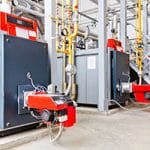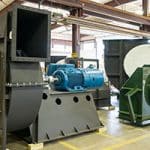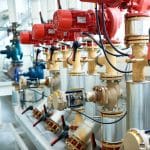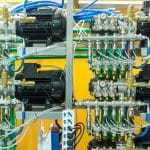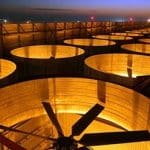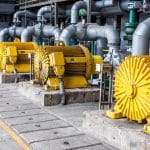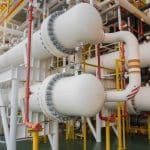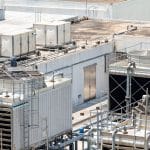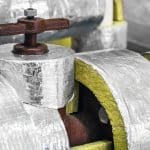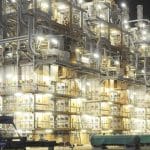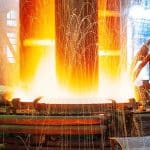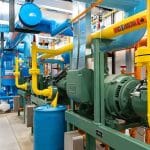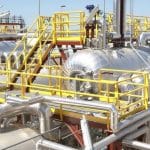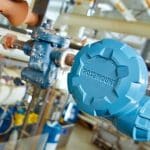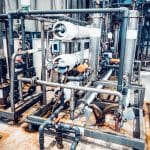The 3 kEys
- Begin with a thorough visual inspection of all major components, checking for wear, damage, and any abnormal signs such as leaks, discoloration, or carbon buildup.
- Examine the burner system thoroughly for wear and damage, with special attention given to ignition systems and pilot burners.
- Excess-air control settings should also be fine-tuned, ensuring that oxygen levels are kept slightly above the minimum requirement to support combustion while preventing unnecessary fuel consumption and heat loss.
Industrial olefins furnaces play a critical role in petrochemical and refining operations, serving as the backbone of ethylene and propylene production. These high-temperature systems must operate with maximum efficiency, reliability, and safety to ensure consistent output and minimize costly downtime. Proper maintenance is not only essential for prolonging the life of these furnaces but also for optimizing fuel efficiency, reducing emissions, and preventing hazardous failures.
A well-structured maintenance program categorizes tasks based on frequency—weekly, monthly, quarterly, and annual inspections and servicing—to maintain peak operational performance. This guide provides an in-depth approach to furnace maintenance, detailing the essential procedures that keep these systems running safely and efficiently.
Weekly Maintenance: Establishing a Strong Foundation
Weekly maintenance forms the first line of defense against performance degradation and mechanical failures. Operators should begin with a thorough visual inspection of all major components, checking for wear, damage, and any abnormal signs such as leaks, discoloration, or carbon buildup. Burner flames must be assessed for proper color and stability, as any deviations may indicate inefficient combustion or fuel-air imbalances.
Instrumentation and controls require frequent verification to ensure the accuracy of temperature, pressure, and flow sensors. Alarms and safety interlocks should be tested to confirm operational readiness. Cleaning remains a vital weekly task—removing dirt, soot, and other residues from external surfaces prevents accumulation that could hinder efficiency. Burner tips should be cleaned and inspected for obstructions that could impact combustion quality.
Operational performance should be analyzed by monitoring furnace efficiency and throughput. The air-to-fuel ratio must be adjusted as needed to sustain optimal combustion, ensuring the furnace operates at maximum efficiency without excessive heat loss or fuel waste.
Monthly Maintenance: Enhancing Performance and Reliability
Monthly maintenance requires deeper inspection and tuning of critical furnace components. The burner system should be thoroughly examined for wear and damage, with special attention given to ignition systems and pilot burners. Misaligned burners or uneven air and fuel distribution can lead to inefficient combustion, necessitating adjustment to maintain uniformity.
The refractory lining demands close inspection for signs of cracking, spalling, or hotspots. Any minor damage should be promptly repaired to prevent further deterioration, which could lead to costly and dangerous failures. Fuel and air supply lines should also be checked for leaks or corrosion, with flow meters and pressure regulators tested and recalibrated as necessary to ensure precise operation.
Heat exchangers play a crucial role in maintaining furnace efficiency, and any fouling or corrosion must be addressed immediately. Cleaning these components restores proper heat transfer rates, minimizing energy losses. Excess-air control settings should also be fine-tuned, ensuring that oxygen levels are kept slightly above the minimum requirement to support combustion while preventing unnecessary fuel consumption and heat loss.
A study on cleaning and inspection of steam cracking furnace convection coils demonstrates the effectiveness of ultrasonic-based smart pigging technology in improving coil conditions, preventing fouling, and optimizing heat transfer. Inspectioneering’s approach allows operators to assess and address maintenance needs proactively, and their writeup on this can be found here: Cleaning and Inspection of Steam Cracking Furnace Convection Coils Now Possible.
Quarterly Maintenance: Conducting In-Depth Evaluations
Every three months, a more rigorous performance assessment is necessary to identify potential long-term issues before they escalate. The entire combustion system should undergo a comprehensive performance test, with all temperature, pressure, and flow sensors verified for accuracy. This proactive approach helps prevent calibration drift and ensures continued compliance with operational requirements.
Furnace tubes must be inspected using ultrasonic or radiographic testing to detect thinning, corrosion, or fouling. Any compromised tubes should be repaired or replaced immediately to prevent catastrophic failures. The refractory lining should be further evaluated, with temperature profiles analyzed to identify unusual heat distribution patterns that may indicate underlying structural issues.
Airflow efficiency is another key area of focus during quarterly maintenance. Cleaning air fans and ducts ensures that combustion air is properly distributed, while lubricating dampers and valves helps maintain smooth, reliable operation. Safety systems—including emergency shutdown mechanisms and fire suppression equipment—should be thoroughly tested to confirm functionality, as any failure in these critical systems can lead to severe operational hazards.
A techno-economic overview of fouling in steam crackers provides a detailed examination of how fouling affects furnace efficiency and maintenance costs. They explore advanced cleaning technologies and their impact on furnace longevity, and it’s at the other end of this link: A Techno-Economic Overview.
Annual Maintenance: Comprehensive Overhaul for Long-Term Performance
Annual maintenance represents a significant opportunity to conduct a complete evaluation and overhaul of the olefins furnace. A scheduled shutdown should be planned well in advance to allow for a detailed assessment of all major components. Burners, tubes, and heat exchangers should be examined thoroughly, with any aging or damaged parts replaced to maintain peak performance.
The refractory lining should undergo an extensive inspection, with large sections replaced if necessary. Protective coatings can be applied to enhance durability and extend service life. Non-destructive testing (NDT) techniques, such as infrared thermography and ultrasonic thickness measurement, should be utilized to detect hidden structural weaknesses that could lead to failure if left unaddressed.
Instrumentation and control systems must be recalibrated to ensure precise measurements and consistent performance. Compliance with environmental regulations is another critical component of annual maintenance. Emissions data should be reviewed, and filtration or catalytic systems should be cleaned or replaced as needed to meet regulatory standards. Excess-air operation should also be reassessed to ensure minimal heat loss and optimized fuel consumption.
Improving efficiency in ethylene steam crackers involves best practices such as cleaning convection sections and encapsulating ceramic fiber refractory. These steps have been proven to enhance efficiency, reduce emissions, and lower operational costs. Integrated Global Solutions offers a variety of reading material here: IGS Materials.
Operator training should not be overlooked during annual maintenance. Keeping personnel informed of the latest maintenance procedures, operational best practices, and safety protocols is essential for ensuring continued efficiency and reliability. Maintenance logs, manuals, and schedules should be updated to reflect any changes or improvements in maintenance strategies.
The Big Finish
A structured and disciplined maintenance program is indispensable for sustaining the efficiency, reliability, and safety of industrial olefins furnaces. By implementing a proactive maintenance approach—ranging from routine weekly inspections to comprehensive annual overhauls—facilities can significantly reduce unplanned downtime, extend equipment lifespan, and enhance overall productivity. Regular maintenance not only preserves operational performance but also helps ensure compliance with safety and environmental regulations, creating a more efficient and sustainable operation.
By prioritizing preventive care, industries can maximize furnace longevity, optimize fuel usage, and maintain a competitive edge in energy-intensive manufacturing processes. Leveraging modern maintenance technologies, as demonstrated in the embedded case studies and white papers, can further enhance operational performance, ensuring long-term success in industrial furnace management.




